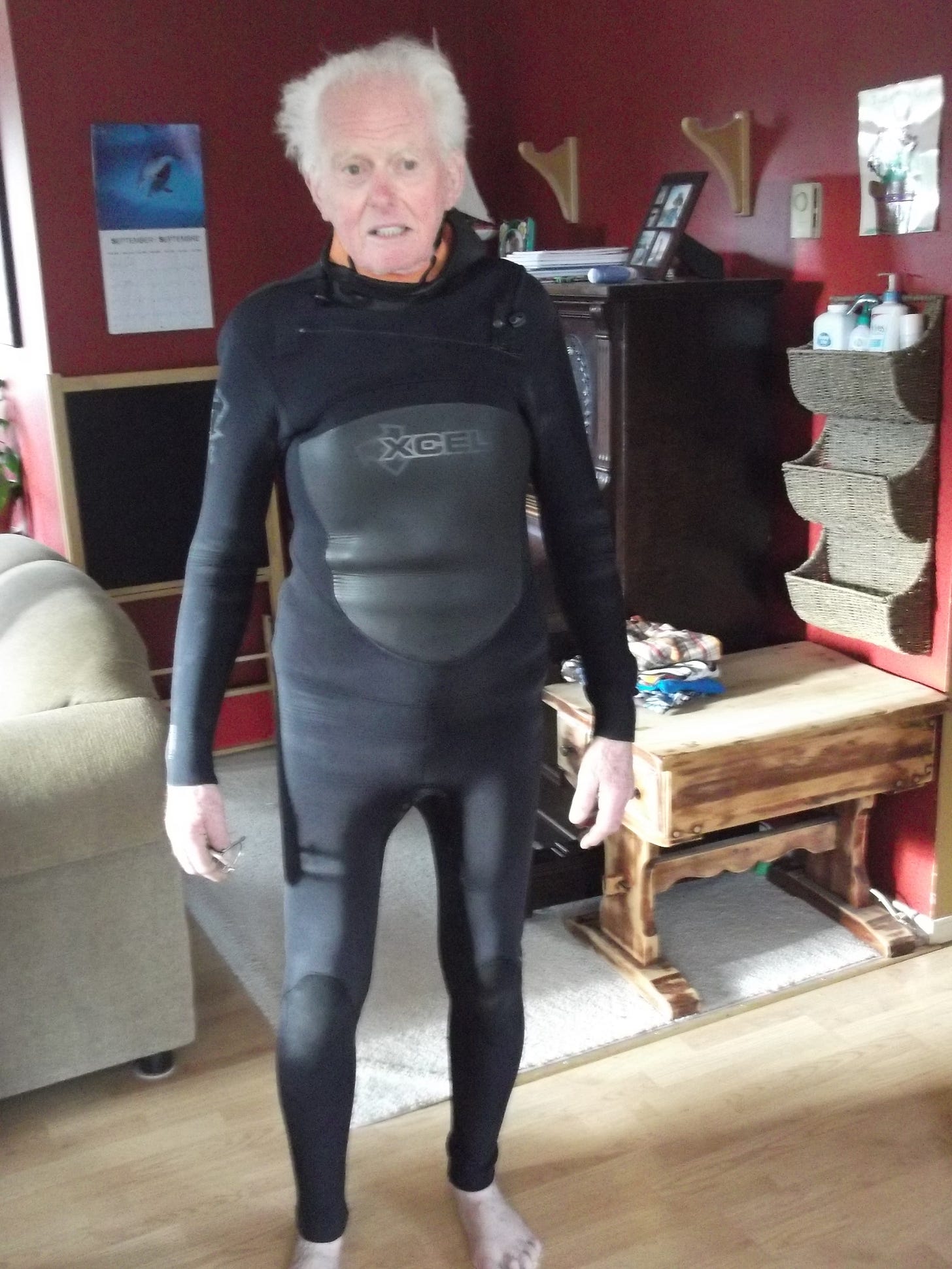Coming up with story development IDEAS quickly
Keeping the 3 Day Novel going......
First: note the juxtaposition in this pic… my dad was always up for something!
In my novel-primer post, there are questions and guidelines for big-picture, story-arc material.
But with this series of shorter posts, written for this weekend, I’m thinking more about those moment-by-moment ideas, or pushes to get to the big-picture Stuff.
Those moments when you feel you are at a crossroads
And your story could go either way. Or, really, it could go in one of many directions.
(And part of the tough stuff of the 3 Day is that desire to get through to an end, and yet still hold to the thought to “explore”—we’re not here to do paint-by-numbers. So how do you choose direction if you’re worried you’ll end up down some path with a dead-end or worse—a cliff…?)
Maybe it’s a bit like raising a child. I tried hard to keep my child-raising as simple as possible: I would remind myself, whenever it felt to be growing complicated, that at the end of the day, I wanted to guide a person to being productive, kind, and content.
Then with whatever question I was facing, I’d place it in that framework, and choose accordingly. (Okay, so it didn’t always work… but that was the intention!)
So… you want to finish this project. You want the experience to be satisfying—both for you AND for the character/s. You want the joy of the unexpected to happen—but in a fruitful way. (As in, “shock” is okay, so long as it is logical to whatever you’ve set up.)
Ask: WWTCD (What would the character do?)
True your character can’t come up with the turns in their life—that’s up to life itself, even fictional life—but what is their response? How do they feel about it and, more importantly, what do they DO about it? How does this impact the other characters?
Imagine this as dominoes, yes. In this way, you have only one decision to make, as writer. Then “sit back” and watch it happen—the reactions and responses.
As for those initial “life happens”—think of this as your inciting incident: that THING that happens early in the story, after which NOTHING IS THE SAME.
If you’ve thought about your story at all prior to the weekend, you probably know what this is. It’s what has gone through your head or even out your mouth when people ask, “What is it about?”
It’s the mid-book sags that gets us all
And what you will probably struggle the most with this weekend. (Midday Saturday into Sunday… )
—you shouldn’t bring on new characters or elements in the last third of your story, but you can in the second third—who might this be? Where are they coming from? Have they been just-around-the-corner waiting to come into view? If you bring them into full view, mid-story, you might put a mention of them earlier.
—always, when stuck, consider and reconsider your setting. Much about characters is borne of the place in which they live, the places they come from, the where-they’d-like-to-be. Bring your setting to life. Your story should be taking place in the only place it can. If your setting isn’t integral to your plot, it should be. Find something in your setting that builds up the sag, that pushes a character in some way… Think of your setting as a character.
—question when you have two of anything—two friends, two scenes that read as repeats, two meals, two fires… Consider either adding a third (especially with characters, three can create some tension in a way that two does not!) or cutting back to one. Especially in a novella, repetition that doesn’t lead somewhere is going nowhere. (Repetition has its place, but go with caution—be aware of it. It’s really easy to write two too similar scenes when writing in a rush.)
—when I did the 3 Day weekend with a friend, at one point he was quite stuck. We sat together and brain-stormed possibilities. Each of us came up with a half dozen, and wrote them and threw the notes into a bowl, and he picked out one, and flew with it. You could do this on your own. You might want to set a timer for 10 minutes, and in that time, write out 12 possible solutions to the “stuck” point you are at. Let your imagination go, and shut down your censor. Then choose. If needed, give yourself another short amount of time to see if the direction is working. Learn how to use a timer for bursts of writing and Push!
—determine what are the secrets of your characters. What is it they don’t want people to know? And what is it they secretly wish others did know? (Who “others”?) Again, consider setting a timer for this work. You don’t want planning to take over the writing of the novel.
—an exercise I had published by The Writer Magazine, and one of my go-to-s for generating plot and ideas. Reenvisioning the “character worksheet.”
—JUXTAPOSITION. My dad, who did not like water, just had to try on my surfer brother’s drysuit. WHAT is something unexpected in your story? What is the character going to “try on?”
End note
Recently I watched Dana Carvey talking with Jerry Seinfeld on Comedians in Cars Getting Coffee—one of my fave little shows, and Dana remind Jerry of that line in Moonstruck, when Cher tells Nicolas Cage to “Snap out of it!”
Honestly: you’re going to have moments this weekend to say to yourself “Snap out of it!” and “Get on with it!”
And you need to listen to yourself. Maybe for writing, it should be, “Snap in to it!”
3 Day Novel discussion thread
Throughout the weekend, please post any questions/thoughts/brainstorming in the discussion thread. I will be checking in with frequently!


